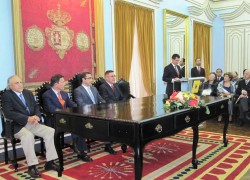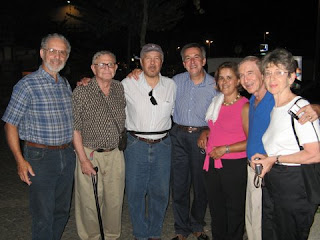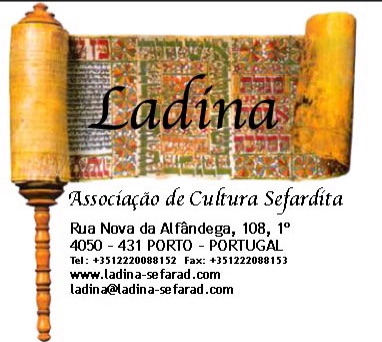RICHARD HENRIQUEZ(s), ACCLAIMED LUSO JAMAICAN CANADIAN ARCHITECT
"Henriquez has an interesting history himself. He's of Portuguese-Jewish
descent, from a family that left their home in the 17th century to
escape the Portuguese Inquisition."
John Mackie, Vancouver Sun, Canada
jmackie@vancouversun.com

Photograph by: Arlen Redekop, PNG
, Vancouver Sun
Richard Henriquez is one of Vancouver's most acclaimed architects. He
designed the condo tower with the tree on the roof near the Sylvia Hotel
in the West End, as well as the BC Cancer Agency building with the
groovy round petri dish windows near Vancouver General Hospital. He even
revitalized several historic structures by melding them into the
Sinclair Centre at Granville and Hastings.
But architecture isn't
his only creative outlet: he's also an artist. And at 71, he's having
his first show in a commercial gallery.
Narrative Fragments brings
together Henriquez's sculptures, drawings and computer-animated
"digital collages." The opening at the Winsor Gallery last Thurs-day
drew a crowd of about 400 of Henriquez's friends and admirers, including
one who spent $8,000 for the mixed media collage Violin in Richmond.
"I'm an old guy, I've got lots of friends," Henriquez chuck-led when asked about the big turnout.
The
first thing you notice about Henriquez's art is the tripods. He's been
collecting them for years, then adding found objects to turn them into
sculptures.
"I have maybe 60 of them now." he notes. "They come in
two varieties: they're either for cameras or they're for surveying
instruments. They're a very primitive, stable form of structure that was
used to lift stone blocks, probably in the Roman times. I just love the
look of them, the materiality of them and so on.
"I started
collecting them, and started to think about what they really
represented. They sup-ported instruments, very technical instruments
that measured things or recorded things. So I thought I would replace
these technical things with intuitively created objects that came from
the other side of the brain."
Hence you get tripods affixed with
toy bulls, surveyor's boxes, old animal skulls, fans, driftwood, and
paper mâche creatures. The funkiest one might be Toy Trumpet, which
actually features a toy saxophone.
"It's a little [instrument]
that comes with a scroll," he explains. "I took the scroll off. I guess
you wound it up and it made a sound, like a toy player piano. I found it
on Main Street in a junk shop."
Violin in Richmond is a collage with a toy violin at the centre, reminiscent of something by the great Spanish artist Juan Gris.
"It's got a little toy violin, it's got a soup bone, and it's got part of an architectural model," Henriquez relates.
"I
saved it because I liked the look of it, and started applying things,
putting [bits of] newspaper on it. Each piece in a collage has its own
story, you see. These fragments represent history.
"Think about
this violin, where it comes from. Wood was grown somewhere in Southeast
Asia, someone cut it down. Someone sold it from a wholesaler to some-one
who made toy violins, some guy carved the thing, and it found its way
to Vancouver into a junk shop."
Henriquez has an interesting
history himself. He's of Portuguese-Jewish descent, from a family that
left their home in the 17th century to escape the Portuguese
Inquisition.
"I grew up in Jamaica," he explains. "My family
[first] moved there in 1690. They lived in one little corner of Jamaica
from 1690 till when I was born, on the north coast, near Ocho Rios. They
had plantations, or they were merchants, things like that."
He fell in love with architecture as a kid.
"I
had a grand-uncle who was an architect and an engineer and a
sculptor/painter, a really neat guy," he says. "When I was 10 I decided
[to become an architect]."
His uncle's son was studying architecture at the University of Manitoba in Winnipeg, so that's where Henriquez went, too.
"It was kind of exciting when the snow came for the first time," he laughs.
"I
made angels in the snow and all that. But then the cold set in. I
remember standing at a bus stop in front of the Great West Life Building
on Osborne one night thinking I was going to die. I was sure I was
going to die."
After he graduated in 1964, he moved back to
Jamaica with his wife Carol and son Gregory. Gregory is now a prominent
architect, while Carol founded and ran Arts Umbrella for 25 years. But
he left to get a master's degree at the Massachusetts Institute of
Technology (MIT), then came to Vancouver in 1967.
"My wife's from
Saskatoon," he says. "She wasn't that keen on Jamaica, so we decided to
come back, and settled in the warmest place we could find in the
country."
A classmate from Winnipeg, Bob Todd, helped him land a
job at Rhone & Iredale. Two years later he and Todd set up their own
firm.
"We were together for eight years," he says. "We did little
houses, cabins on the Gulf Islands. What starting architects do,
houses, renovations. Optical shops.
"The Gaslight Square project
[on Water Street in Gastown], the courtyard, was the first sort of
significant project that we got. Then I did a building for Bob Lee in
Chinatown, the Lee Building."
Henriquez thrived in the 1980s, when
he worked on the tower beside the Sylvia Hotel (1984), the Sinclair
Centre (1986) and Eugenia Place (1987), the condo with the tree on the
roof.
"I got interested in trying to combine narrative with
architecture," says Henriquez, who won the gold medal from the Royal
Architecture Institute of Canada in 2005.
"I thought if we could
somehow think of [Eugenia Place] as an archeological site, with layers
of history, trying to represent every-thing that has ever been on the
site, [you could] give people the idea that they live in a historical
continuum.
"The first thing on the site was the first-growth
forest. Then they built four little cabins at the turn of the century,
and in 1947 they built a three-storey wood frame building that we tore
down to build the tower. So if you look at the site, you'll see the
footprints of all of them."
How? He had a sculptor create concrete
stumps to represent the trees that had been cut, then he put a tree on
the roof, to represent the height of the old-growth forest before
Europeans arrived to chop it all down.
"But just to stick it up
there didn't seem kind of right," he says. "So there's this screw-like
thing [in the front] that looks like it could have lifted it up to the
height of the first-growth forest."
It's a cool little feature,
like a futuristic 19-storey high bay window. Like a screw, it tapers at
the bottom and has a big head at the top. Unlike a screw, it looks like
it has a tree growing out of it. Which is one of the most distinctive
architectural touches on any recent building in Vancouver - and is
historically appropriate, to boot.
"The forest was about a couple hundred feet tall," he says with a smile. "They were big trees."
AT A GLANCE
RICHARD HENRIQUEZ: NARRATIVE FRAGMENTS
Where: Winsor Gallery, 3025 Granville
Info: http: //winsorgallery.com http: //henriquezpartners.com/
jmackie@vancouversun.com
 henriquezpartners.com/people/richard-henriquez/
henriquezpartners.com/people/richard-henriquez/




















